|
Chris Fedderson — MacroFine Musings Kathy Lawler — Guest Blogger ~~~~~~~~~~~~~~~~~~~~~~~~~~~~~~~~~~ In May of last year, Kathy wrote a guest blog titled Hummingbirds, Butterflies, & Bees . . . Oh My!, [scroll down a bit] about attracting these, and other friends, to your garden. That blog concentrated on bees and butterflies. So now she’s following up with another Guest Blog about Hummingbirds . . . We have Ruby-Throated hummingbirds in Northern Virginia where we live. They’re golden green on their backs and crowns with gray-white under parts. They stop by on their way to South America, and will be gone by early fall. We spent many evenings last summer on the deck watching then whiz and dart around and did miss them when they moved on. But we’re looking forward to hosting them again this spring and summer. When we added a hummingbird feeder to our yard last year we figured we’d enjoy watching the Hummies use their new feeder. We thought we’d see them clustered around, taking turns feeding. Oh, Nooooo…We didn’t realize the little Hummies were quite so territorial! We had three or four that seem to be constantly fighting over the feeder. We had the Hummie Wars going on every evening with the birds chasing each other around, trying to lay claim to the feeder. This year we will certainly avoid the fuss by having more feeders.
Oh, and for those of you wondering if Chris got any good photos… well... he did get some shots... but they all look like: SSSSsssswwwwwoooooooosssssssshhhh! Unlike when we decided to build the birdbath for the yard, we did a little research with this project. We really looked around at hummingbird feeders — all the different shapes, configurations, and colors. And we read several sources to find out what parameters are important to Hummies; what they like and don’t like. There are several blogs to read about choosing a hummingbird feeder, often with varying opinions, and lists of what you may want to consider. Here were some of our top items to consider:
Here are some additional tips:
And, as it turns out, not only will your Hummies provide hours of circus-like amusement each evening, they are also great pollinators, servicing plants probably overlooked by insects. According to the Galveston County Master Gardeners’ web site: “Considering insects use scent, and birds use sight, hummingbird flowers usually have little or no fragrance. ... Hummingbirds are important pollinators, for when they feed their forehead rubs against the stamens and pistils collecting pollen. They then move from flower to flower, pollinating as they go.” So get those feeders going! Get your lawn chairs stationed! Position your beverage holders just right! And prepare to be entertained while you’re also helping with Global Pollination! . . . or at least Neighborhood Pollination. [give yourself a big smiley face emoticon here!] Thank You for visiting, —Kathy Lawler, Guest Blogger
1 Comment
Chris Fedderson — MacroFine Musings ~~~~~~~~~~~~~~~~~~~~~~~~~~~~~~~~~~ I have recently started experimenting with setting up Contemporary Still Lifes — not bowls of fruit or vases of flowers; my Still Lifes have taken on a New Life. These studio set-ups, or dioramas, combine various elements, not usually associated with each other, into a single story-telling image. And this is not easy! I’m in the habit of letting Nature do my set-ups, then all I need to do is snap a photo! ;-) That was obviously a bit — a lot(!) — of an over-simplification. Just as with my outdoor-based photography, where all the rules of composition, visual flow, coordination of colors and elements, background considerations, scale, story-telling, etc., come into play, all these rules also apply to these studio set-ups and need to be followed … or intentionally broken. And all this just to set up the scene. Next, the usual second set of rules also needs to be attended to and employed. These are all the technical considerations that contribute to photographic quality: lighting, focus, depth of field, exposure, shadows, highlights, point of view, etc. This ain’t your Gramma’s bowl of fruit! This is even better! In working with these studio set-ups, I can engineer whatever story I want, using whatever elements and appliances I want without regard to preconceived associations or meanings. I can combine elements Nature would never see to put together. I can put orchids in a bird’s nest. I can pair up a hibiscus flower with malted barley, hops, and wheat stalks to depict a refreshing summer brew. I can shoot summer flowers through a sheet of ice if I want to! You say you’re not up to the challenge of all this imagination, invention, and visualization? Hogwash! You did just this every time you played with your dollhouse or action figures or built a sand castle or snowman. You put together various elements into a single scene to tell the story you were playing in your Mind’s Eye.
So now, channel your inner-adventurer. Let your imagine go free. Get together your “things”, your visual elements, and tell us a story! Thank You for visiting, — Chris P.s. What story do you “see” that you want to tell? I know you can’t attach an image here, but give us a synopsis so we can share in your story. I invite you to come see a few stories I’ll be telling at my upcoming solo exhibit. My work will be on display from November 9th through December 4th at Arches Gallery in building 9 at the Workhouse Art Center in Lorton. Chris Fedderson — MacroFine Musings In Coleus-beration with: Kathy Lawler — Guest Blogger ~~~~~~~~~~~~~~~~~~~~~~~~~~~~~~~~~~ In our college days no dorm room or apartment was complete without one or more potted specimens of: Boston Fern, Schefflera, Spider Plant, and, of course, Coleus. Back then our collective taste in houseplants was about on a par with our taste in beer; we’d happily drink brands now consider un-palatable, and we’d keep our houseplants no matter how raggedy, misshapen, or bug-ridden they were. We’ve all come a long way since then, and so has our friend, Coleus. Having recently re-ignited an appreciation in all things gardening, there was still one plant we just couldn’t wrap our heads around wanting in our yard. It was Coleus. It wasn’t until we built our Uber-Fun Yard Pots that we had a reason to even explore Coleus. Back then, it seemed Coleus had just one look: “normal” leaves, green with a dab of color in the middle, and trailing stems. Now, OMGoodness! There are now about a billion new cultivars of Coleus. Curly leaves. Small leaves. Big leaves. Purple. Red. Maroon. Yellow. Some leaves don’t even have any green at all! We’ve got stand-up varieties. Trailing ones. Shade-preferring and full-sun-tolerant choices. Seems there are now Coleus varieties available to satisfy any, and every, gardening need — indoors and out. We had great luck growing them last year, so this season we added several more varieties. We purchased Burgundy Wedding Train, Electric Coral, El Brighto, and several more they are doing really well. The variety and color of this annual wins big for us! We love the constant color of the foliage and what they bring to a yard — you don’t have to wait for blooms to have color. Another interesting think about Coleus is that depending on the conditions they are grown in — perhaps the soil or the sunlight vs. shade, or maybe the day/night temperature — their colors change making them all the more enjoyable. One thing about Coleus that hasn’t changed though, is its ability to grow from cuttings. We’ve rooted them in a glass of water and we’ve rooted them by simply sticking new cuttings into consistently moist potting soil. Planting them directly in soil has won for us, but you have to be able to bear that they will look horrible for a week or two after doing this. They look like they are going to die any minute but then one day — they perk up and start going crazy.
To root in soil, you need cut off stalks 2-3 inches longer than you want to have protruding out of the soil. Choose stalks where you have leaves at the bottom that you can cut off so the node will be the source of your new roots. Poke a hole in the dirt (I use a nail, a huge 40d one) and then gently insert the stem and carefully and pack soil around it. Using cuttings is a great way to experiment with pairing up different looks in the same pot. Try a stand-up variety like Eruption with a trailing type such as Trailing Green Olives. Or mix a bunch of them in a planter. Or mix a bunch of them with several other different species. Coleus with Fountain Grass, Sweet Potato Vine, and Variegated Trailing Viola, perhaps. The possibilities are wide open! So, go through your old yearbooks. Look up your old friend, Coleus. Invite Coleus into your home for a visit. You’ll be happily surprised with what you discover! Thank You for visiting, — Chris and Kathy P.s. What unusual pairings have you tried in either your yard in your houseplants? Do you have a favorite combination? Let’s share stories and try each other’s combos! Chris Fedderson — MacroFine Musings ~~~~~~~~~~~~~~~~~~~~~~~~~~~~~~~~~~ Do I ever have a photo challenge for you! Bubbles! I recently experimented with trying to photograph bubbles. Not the kind found in champagne or beer, although that might be fun too, but the kind you used to have so much fun blowing, watching, and chasing as a kid. An interesting thing about the experiment was that it presented about every possible photographic challenge you could think of:
For me, this was actually an experiment in seeing what my new camera would do on some of the automatic settings. I rarely use them but it is always good to know what your camera does when left to its own devises; for that moment when a hummingbird flies up and you don’t have time to do much in the way controlling your settings.
You also don’t want your camera's settings to ruin a great opportunity, so you should learn what can happen. For example, while on auto, the ISO on my camera sometimes went to some ridiculous number and if I had captured something good, I likely wouldn’t be able to print it due to the noise/grain in the image. One caution: this is a messy, messy challenge — you’re going to get soap everywhere, so don’t try this challenge indoors! Also, you’ll need an assistant — someone to blow the bubbles — and to clean up afterward! Thank You for visiting, — Chris P.s. So how did your bubbles turn out? I'd love to hear about your experience. |
Categories
All
About Chris
I am a Virginia-based photographer and gather my images while hiking in parks and natural areas here at home and in the locations I travel to. I also love to visit arboretums and botanic gardens to find unusual and exotic subjects. Archives
March 2017
|
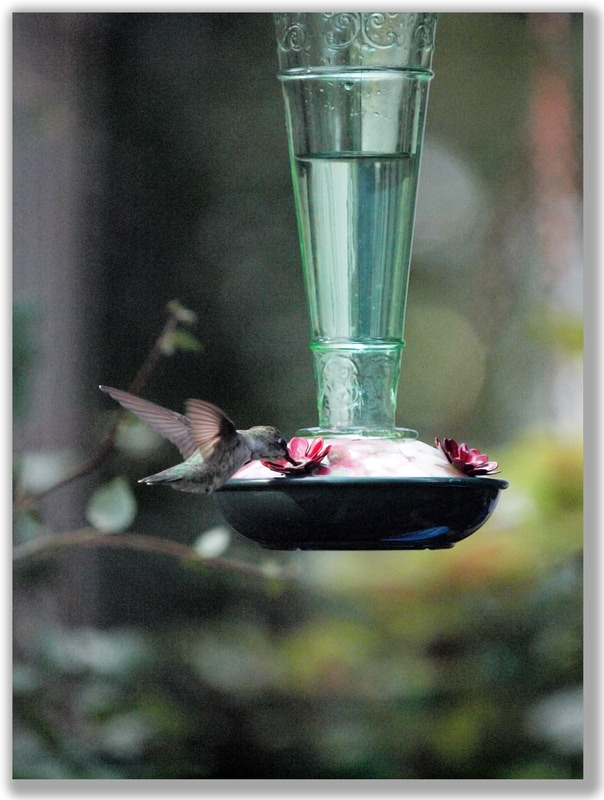
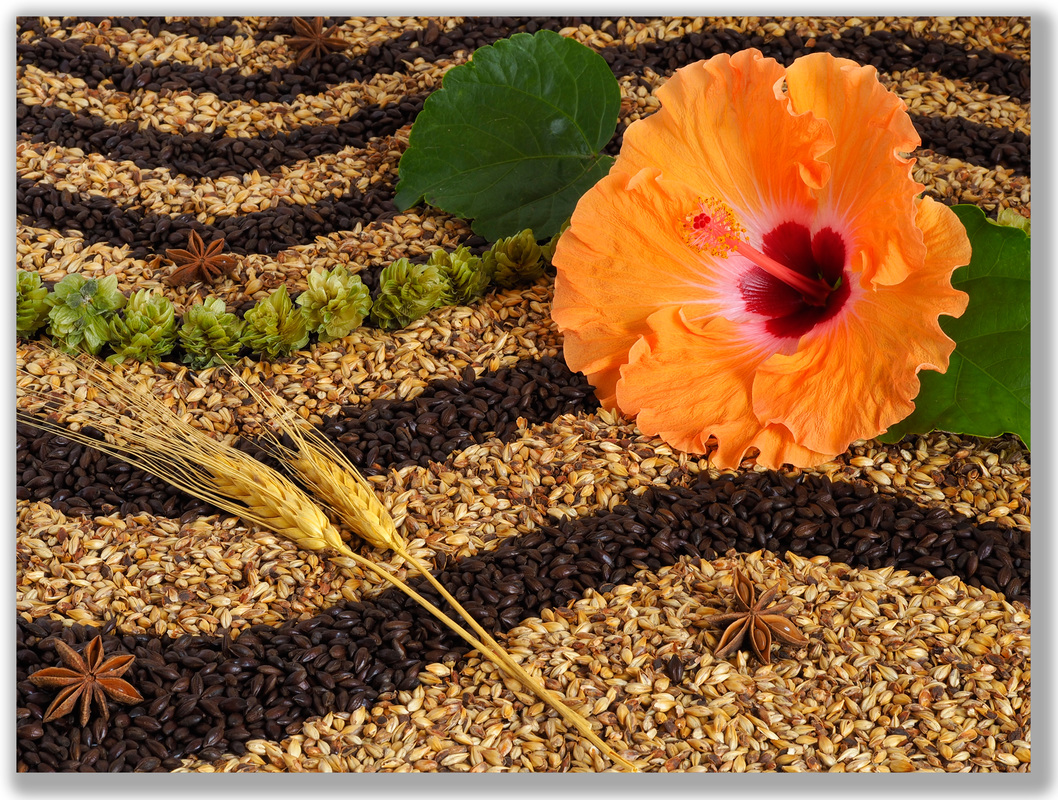
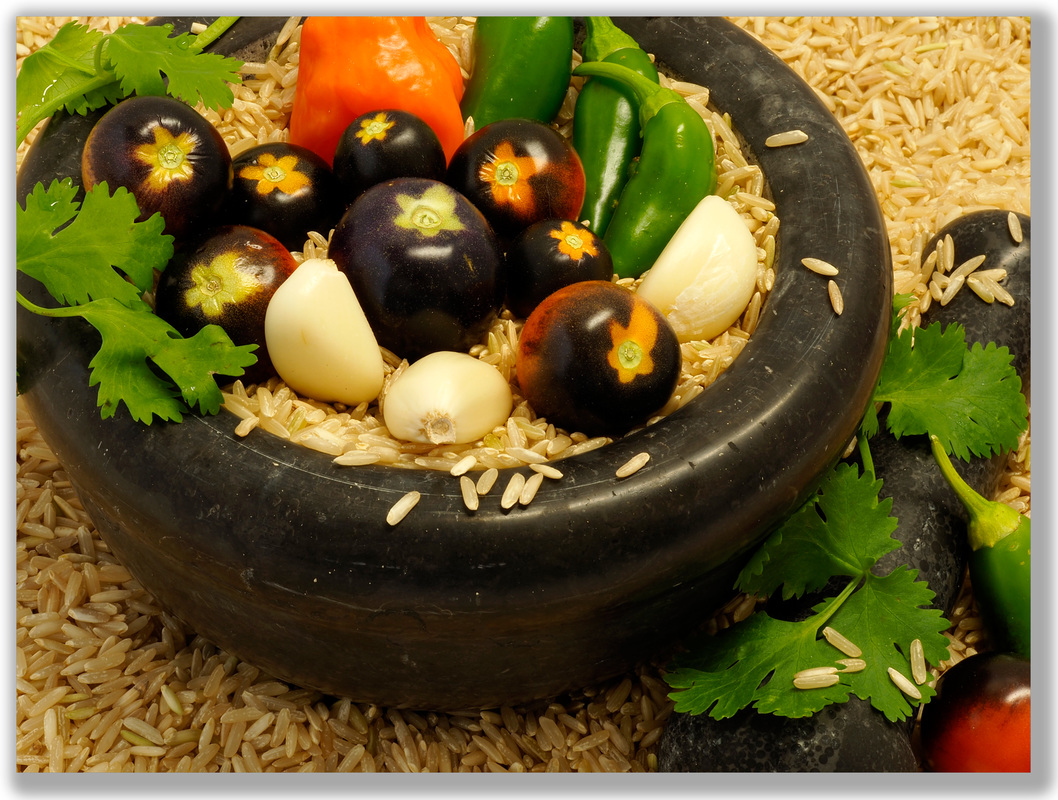
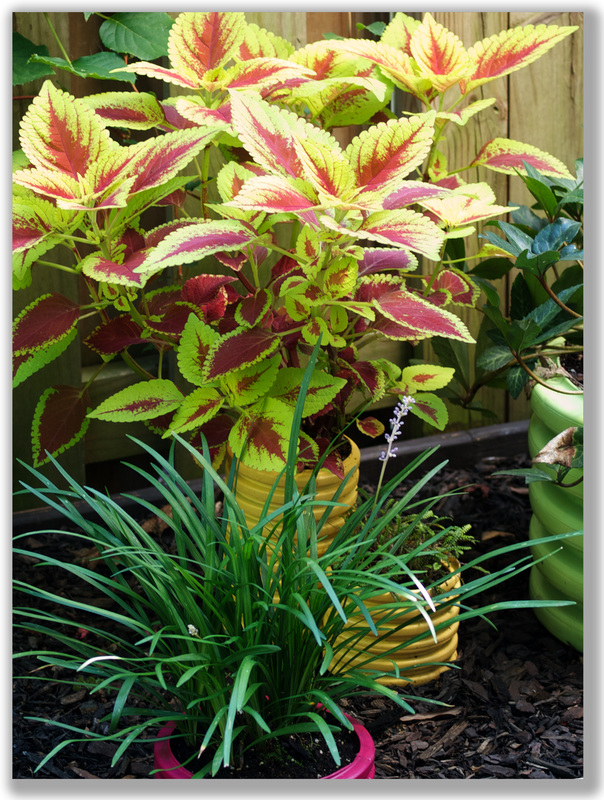
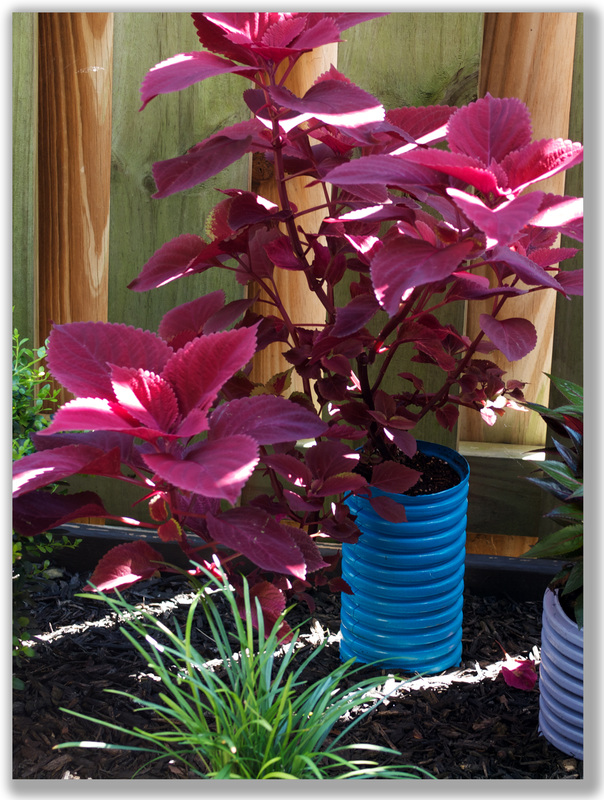
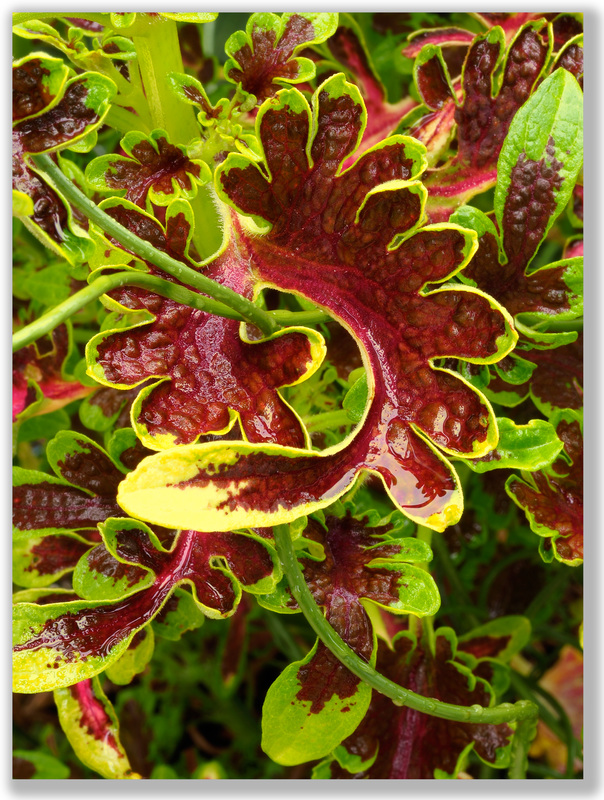
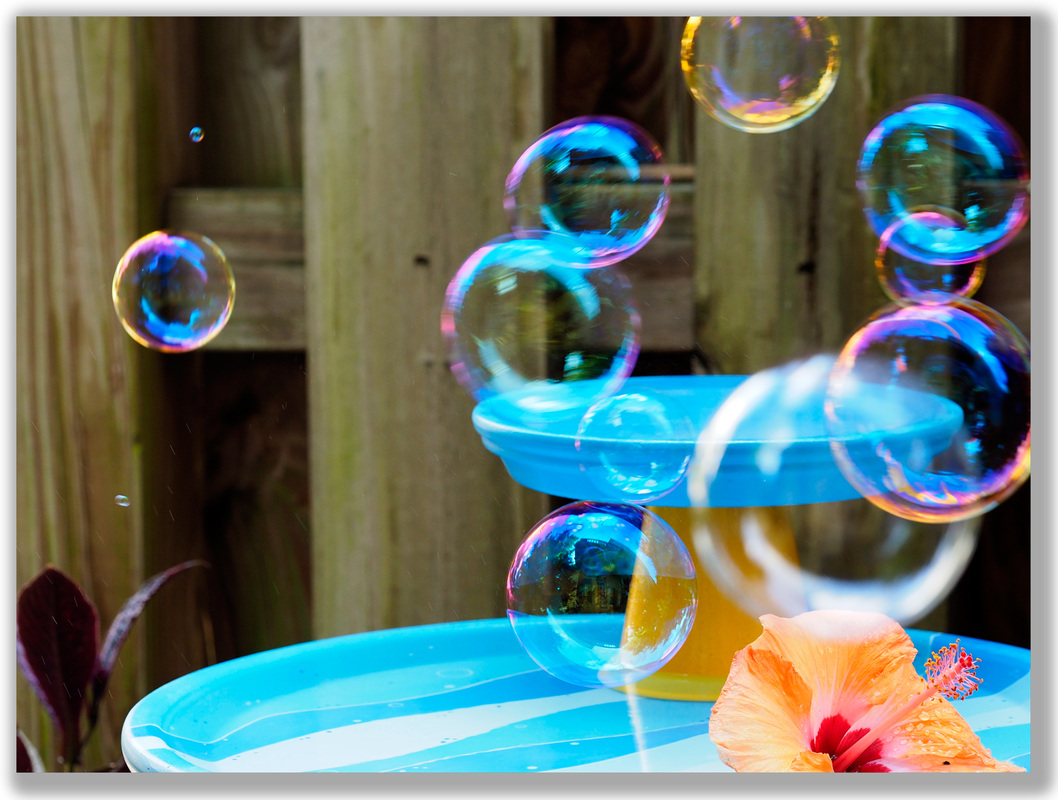
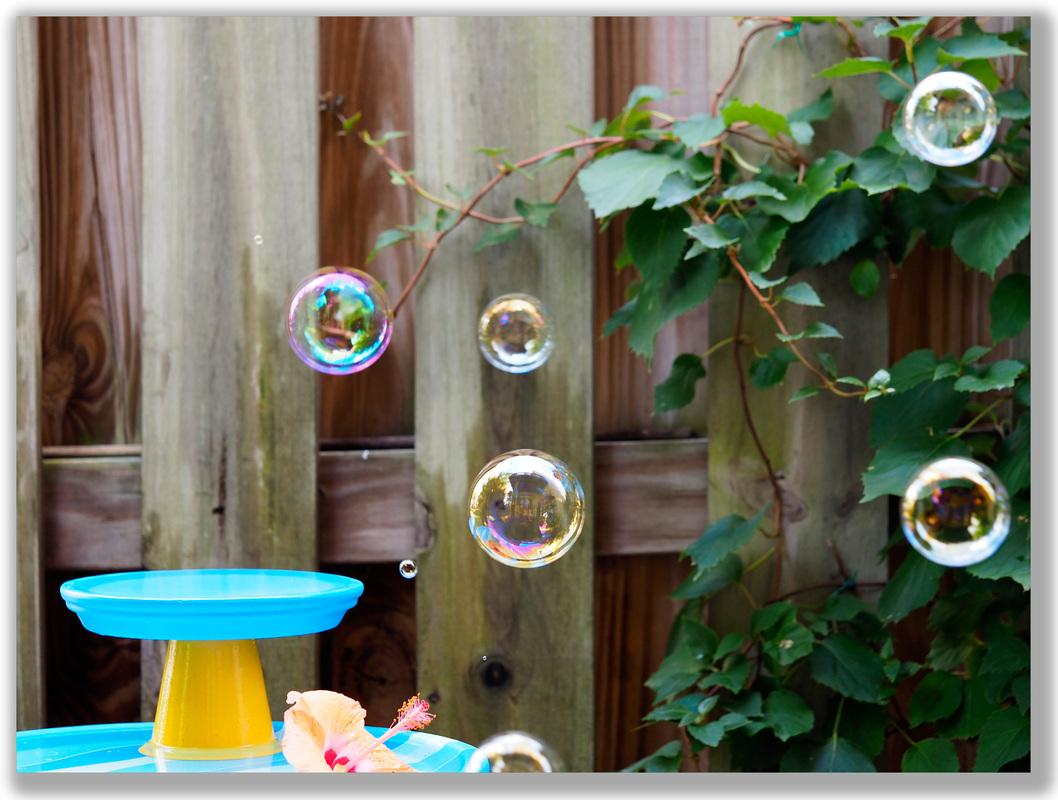
 RSS Feed
RSS Feed
